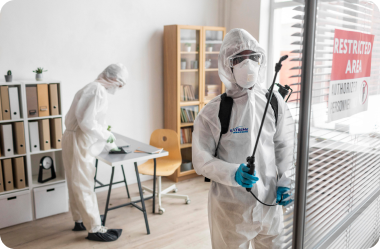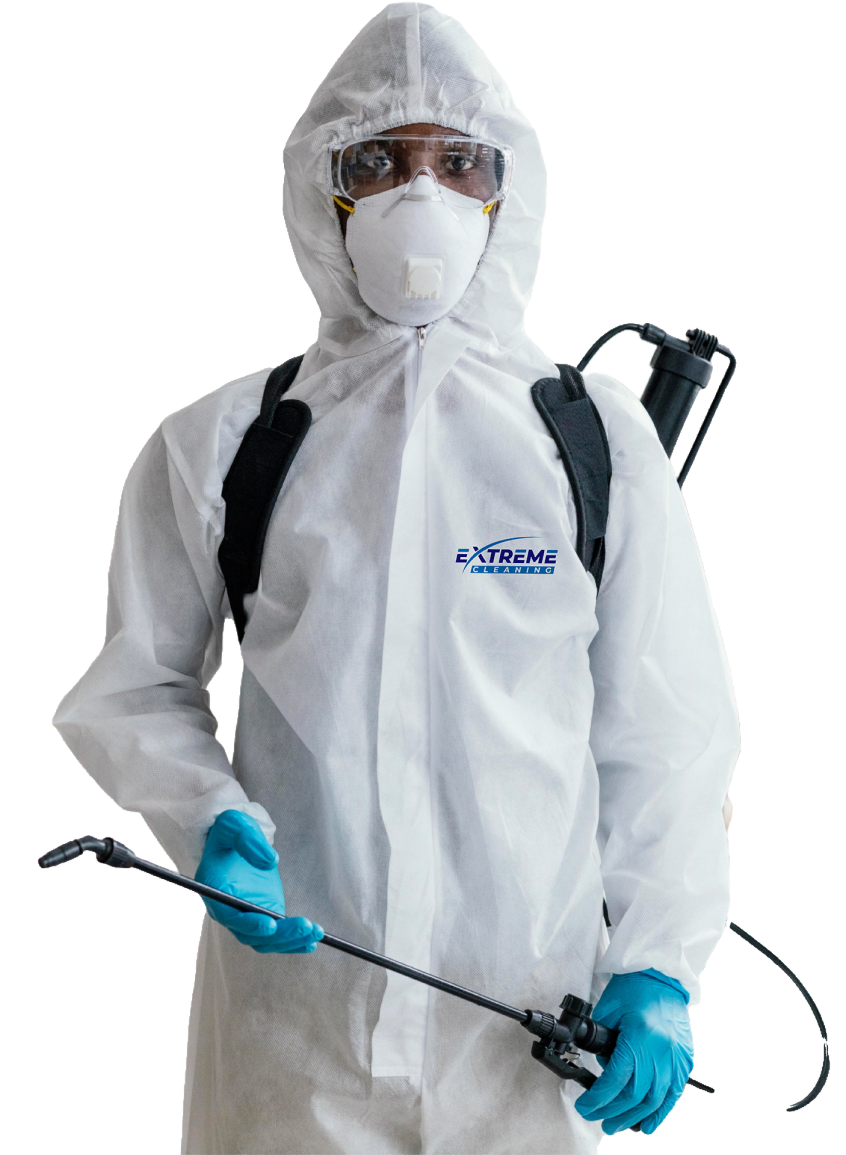Suicide cleaning, often referred to as trauma cleaning or crime scene cleaning, is a specialized service dedicated to cleaning and decontaminating areas where a suicide, traumatic injury, or other violent incidents have occurred. This comprehensive guide will delve into the nuances of suicide cleaning, its importance, the processes involved, and its impact on families and communities. We will also explore the training and expertise required for professionals in this field, as well as the emotional and psychological aspects related to the aftermath of such tragic events.
The Importance of Suicide Cleaning
Ensuring Safety
One of the primary reasons for the existence of suicide cleaning services is to ensure the safety of the environment. After a traumatic event, the scene is often contaminated with blood, bodily fluids, and other potentially infectious materials. These biohazardous substances pose significant health risks, including the transmission of bloodborne pathogens like Hepatitis B, Hepatitis C, and HIV.
Restoring the Environment
Beyond the immediate health risks, the presence of biohazardous materials can make a space uninhabitable. Suicide cleaning professionals work diligently to restore the affected area to a safe and habitable state. This process often involves the removal and disposal of contaminated items, thorough cleaning, and disinfection.
Providing Emotional Relief
For families and property owners, the aftermath of a suicide or traumatic incident is overwhelming and emotionally devastating. Having professionals handle the cleanup process can provide a sense of emotional relief, allowing them to focus on grieving and healing rather than dealing with the distressing task of cleaning up.
The Process of Suicide Cleaning
Initial Assessment
The first step in the suicide cleaning process is the initial assessment. Professionals assess the extent of the contamination and determine the necessary steps to restore the area. This assessment includes identifying all biohazardous materials, understanding the layout of the space, and planning the cleanup process.
Containment
To prevent the spread of contaminants, professionals establish a containment zone around the affected area. This involves sealing off the area with plastic sheeting and using negative air machines to control airflow and prevent contaminants from spreading to other parts of the property.
Removal of Contaminated Materials
Next, all contaminated materials are carefully removed from the site. This can include furniture, carpeting, flooring, and personal items that have been affected. These materials are disposed of according to strict biohazard disposal regulations to ensure safety and compliance with health laws.
Cleaning and Disinfection
Once the contaminated materials are removed, the cleaning process begins. Professionals use specialized cleaning agents and equipment to thoroughly clean and disinfect all surfaces. This step is crucial to eliminate any remaining pathogens and ensure the area is safe for habitation.
Deodorization
Traumatic incidents often leave behind strong odors that can be distressing. The cleaning team uses deodorization techniques to remove these odors, ensuring that the area not only looks clean but also smells fresh.
Final Inspection
After the cleaning and deodorization processes are complete, a final inspection is conducted to ensure that the area is fully restored and safe. This inspection includes testing for any remaining contaminants and verifying that all biohazardous materials have been properly removed.
The Expertise and Training Required
Specialized Training
Professionals in the suicide cleaning industry undergo specialized training to handle biohazardous materials safely and effectively. This training covers a range of topics, including:
- Bloodborne Pathogens: Understanding the risks and proper handling of blood and bodily fluids.
- Personal Protective Equipment (PPE): Proper use of protective gear to ensure safety during the cleaning process.
- Biohazard Disposal: Regulations and procedures for the safe disposal of contaminated materials.
- Cleaning and Disinfection Techniques: Advanced methods for cleaning and disinfecting affected areas.
Psychological Preparedness
In addition to technical skills, suicide cleaning professionals must be psychologically prepared to handle the emotional challenges of their work. This involves:
- Empathy and Sensitivity: Being able to interact with grieving families with compassion and understanding.
- Stress Management: Techniques to cope with the emotional toll of working in traumatic environments.
- Professional Support: Access to counseling and support services for professionals in the field.
Emotional and Psychological Aspects
Impact on Families
The aftermath of a suicide or traumatic incident leaves a profound impact on families and loved ones. The presence of biohazardous materials can be a constant reminder of the tragedy, making it difficult for them to begin the healing process. Professional suicide cleaning services help alleviate this burden by restoring the affected area, allowing families to focus on their emotional recovery.
Support Services
Many suicide cleaning companies also offer support services to help families cope with their loss. These services can include:
- Counseling Referrals: Connecting families with grief counselors and support groups.
- Memorial Planning: Assisting with the planning of memorial services and tributes.
- Resource Guides: Providing information on legal and financial assistance available to families.
The Role of Community
Communities also play a vital role in supporting families after a traumatic event. By fostering an environment of understanding and compassion, communities can help families feel less isolated in their grief. Local organizations and support groups can provide additional resources and a network of support.
Challenges in Suicide Cleaning
Emotional Toll on Professionals
Suicide cleaning is not just physically demanding; it is also emotionally taxing. Professionals often witness scenes of extreme trauma and must navigate the emotional aftermath experienced by the victims’ families. This can lead to compassion fatigue and emotional burnout if not properly managed.
Health Risks
Handling biohazardous materials poses significant health risks. Even with proper training and protective equipment, there is always a risk of exposure to pathogens. Professionals must remain vigilant and adhere strictly to safety protocols to minimize these risks.
Regulatory Compliance
Suicide cleaning companies must comply with a variety of regulations and laws regarding the handling and disposal of biohazardous materials. Failure to comply can result in legal consequences and pose safety risks to the public.
Cost Considerations
The cost of suicide cleaning can be a burden for families already dealing with the aftermath of a traumatic event. Insurance may cover some of the costs, but not all families have adequate coverage. Some companies offer financial assistance or sliding scale fees to help alleviate this burden.
The Evolution of Suicide Cleaning
Early Days
The field of suicide cleaning has evolved significantly over the years. In the past, the responsibility of cleaning up after a traumatic event often fell on the families or property owners, adding to their emotional distress. There were few specialized services, and those that existed lacked the training and equipment available today.
Professionalization of the Industry
The industry began to professionalize in the late 20th century, with the establishment of specialized training programs and the development of advanced cleaning technologies. Today, suicide cleaning is a recognized profession with stringent standards and protocols.
Technological Advancements
Advancements in cleaning technology have significantly improved the effectiveness and efficiency of suicide cleaning. Innovations such as ozone machines for odor removal, advanced disinfection agents, and specialized equipment for handling biohazardous materials have made the process more thorough and safer.
Increasing Awareness
There is growing awareness of the importance of professional suicide cleaning services. Media coverage and public education campaigns have highlighted the risks associated with biohazardous materials and the need for specialized cleaning services. This increased awareness has led to greater acceptance and utilization of these services.
Conclusion
Suicide cleaning is a critical service that plays a vital role in ensuring the safety, health, and emotional well-being of individuals and communities affected by traumatic events. By understanding the importance of professional cleaning, the processes involved, and the challenges faced by those in the industry, we can better appreciate the essential work carried out by these dedicated professionals.
Summary Table: Key Aspects of Suicide Cleaning
| Aspect | Description |
|---|---|
| Safety | Ensuring the environment is free from biohazardous materials and health risks. |
| Restoration | Returning the affected area to a safe and habitable state. |
| Emotional Relief | Helping families cope by handling the distressing task of cleanup. |
| Specialized Training | Training in bloodborne pathogens, PPE, biohazard disposal, and cleaning techniques. |
| Psychological Support | Providing empathy, stress management, and access to professional support for cleaners. |
| Community Role | Supporting families through local organizations and fostering understanding and compassion. |
| Technological Advances | Utilizing advanced cleaning technologies and methods to improve safety and effectiveness. |
| Regulatory Compliance | Adhering to laws and regulations regarding the handling and disposal of biohazardous materials. |
| Cost Considerations | Addressing the financial burden on families through insurance, financial assistance, and sliding scale fees. |
In conclusion, suicide cleaning is not just a matter of cleaning a physical space; it is about restoring a sense of normalcy and safety for those affected by traumatic events. The professionals who undertake this challenging work provide an invaluable service that goes beyond mere cleaning—they offer compassion, support, and a pathway to healing for individuals and communities in their time of need.




